Welcome to our free classical music site

Do you write about classical music? Are you a blogger? Want to team up with Classical Connect? Send us a message, let's talk!

Do you write about classical music? Are you a blogger? Want to team up with Classical Connect? Send us a message, let's talk!
January 22, 2018. Mozart in Vienna, early years. s birthday is this week – he was born on January 27th in 1756. Last year we wrote about his life and music during the period around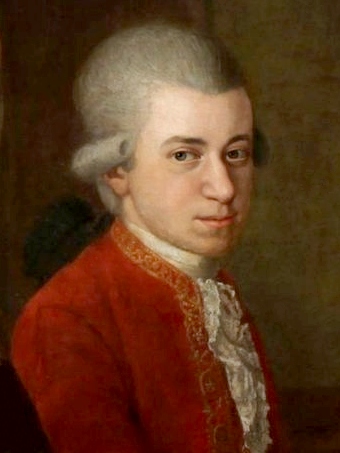 1781, when the 25-year-old Mozart finally left Salzburg and settled in Vienna. He first stayed at Singerstrasse 7, not far from Stephansplatz. Later in 1781 he moved in with the family of the Webers. Mozart met the Webers in 1777, while they still lived in Mannheim. The Webers had four daughters, Aloysia, Josepha, Constanze and Sofie. Both Aloysia and Josepha were fine singers; some years later Josepha would premier the role of the Queen of Night in The Magic Flute. Mozart promptly fell in love with Aloysia, but had to leave Mannheim after a short stay as his father Leopold wanted him to go to Paris. Several months later Mozart met Aloysia again, this time in Munich, where she was singing at the Court Theater. Unfortunately, by then Aloysia’s feeling had changed, she even pretended not to recognize Mozart. According to Georg Nikolaus von Nissen, Mozart’s biographer and the husband of Mozart’s widow, Constanze, Mozart’s reaction was swift: he sat at the piano and sung, “The one who doesn’t want me could kiss my ass” (Mozart wasn’t shy of using scatological terms).
1781, when the 25-year-old Mozart finally left Salzburg and settled in Vienna. He first stayed at Singerstrasse 7, not far from Stephansplatz. Later in 1781 he moved in with the family of the Webers. Mozart met the Webers in 1777, while they still lived in Mannheim. The Webers had four daughters, Aloysia, Josepha, Constanze and Sofie. Both Aloysia and Josepha were fine singers; some years later Josepha would premier the role of the Queen of Night in The Magic Flute. Mozart promptly fell in love with Aloysia, but had to leave Mannheim after a short stay as his father Leopold wanted him to go to Paris. Several months later Mozart met Aloysia again, this time in Munich, where she was singing at the Court Theater. Unfortunately, by then Aloysia’s feeling had changed, she even pretended not to recognize Mozart. According to Georg Nikolaus von Nissen, Mozart’s biographer and the husband of Mozart’s widow, Constanze, Mozart’s reaction was swift: he sat at the piano and sung, “The one who doesn’t want me could kiss my ass” (Mozart wasn’t shy of using scatological terms).
While living with the Webers in Vienna, Mozart fell in love with Constanze, the third daughter. They married on August 4th of 1782 (papa Leopold consented to the marriage only grudgingly). In the following years, till his death in 1791, he and Constanza moved a dozen times but all of their addresses were within the city’s central First District. The first pieces composed in Vienna were several sonatas for keyboard and violin, K 376 through K 380. The set was dedicated to Josepha Auernhammer, then 23, a pianist and Mozart’s pupil. Josepha fell in love with her teacher; at that time Mozart was still courting Constanza but there was a period in 1782 when they separated; it’s possible that Mozart’s affair with Josepha took place during that period. Here is the Violin sonata K 380, performed by Henryk Szeryng, violin, and Ingrid Haebler, piano. Mozart also wrote a lovely sonata for two pianos to be played by him and Josepha. It’s performed here by two young American pianists, Nimrod David Pfeffer and Rafael Skorka. But the main composition of Mozart’s first year in Vienna was the opera Die Entführung aus dem Serail (The Abduction from the Seraglio). It premiered on July 16th, 1782 in the Vienna Burgtheater to huge success. In addition to the Burgtheater, the opera was staged by Emanuel Schikaneder, a librettist (he wrote the libretto to the Magic Flute), composer and impresario, who founded the Theater an der Wien. Even during Mozart’s time, productions of the opera were staged throughout German-speaking cities. Here’s Belmonte’s aria Konstanze, dich wiederzusehen! ... O wie ängstlich, o wie feurig!, a favorite not just with the public but with Mozart himself. In this 1965 recording the superb Fritz Wunderlich is Belmonte.Permalink
January 15, 2018. Nicolas Gombert. We have never written about Nicolas Gombert, which is quite an omission, considering that Gombert is considered to be one of the greatest Flemish composers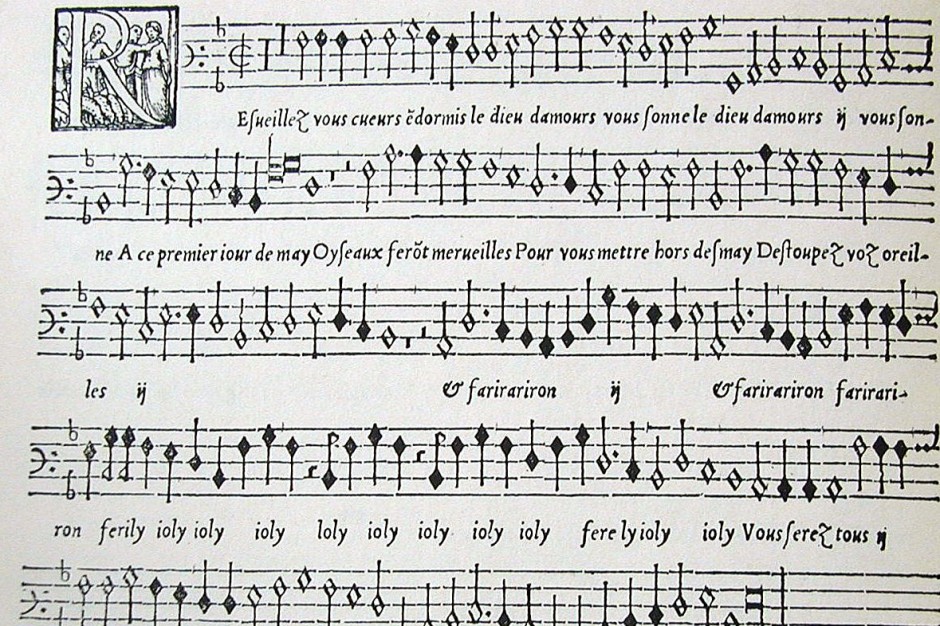 of the generation following Josquin des Prez. Gombert was born around 1495 in southern Flanders. Some musicologists speculate that he studied with Josquin, who at that time was living in Condé-sur-l'Escaut, not far from Gombert’s presumed birthplace. Even if he wasn’t Josquin’s student, Gombert was clearly an admirer, as he wrote music to commemorate Josquin’s death. Sometime around 1526 Gombert found employment with the court of the Holy Roman Emperor Charles V. Charles’s lands stretched from the Netherlands and Flanders to Spain, Austria, some German states and Italy, and he traveled extensively. Gombert accompanied the emperor on his trips, being “Master of the boys” of the court chapel. As he visited different countries, his fame grew, with his music being published in many countries. Even though he was never formally appointed maître de chapelle (music director) of the court, he served as court composer. Gombert’s life changed dramatically in 1540. According to Gerolamo Cardano, a court physician, he committed a “gross indecency” against a boy in the emperor’s employ. Gombert was sentenced to the galleys and spent several years in the high seas. We don’t know how long his punishment lasted and what his conditions were like, but during that time he managed to compose several pieces. Those found their way back to the court and eventually earned Gombert the emperor’s pardon. It seems that Gombert spent the last years of his in Tournai: in 1547 he sent a letter from there to Ferrante Gonzaga, Charles’s captain (Ferrante was known as a patron of composers – some years later he would bring two great composers to his court, Orlando di Lasso and Giaches de Wert). Gombert probably died in Tournai sometime around 1560.
of the generation following Josquin des Prez. Gombert was born around 1495 in southern Flanders. Some musicologists speculate that he studied with Josquin, who at that time was living in Condé-sur-l'Escaut, not far from Gombert’s presumed birthplace. Even if he wasn’t Josquin’s student, Gombert was clearly an admirer, as he wrote music to commemorate Josquin’s death. Sometime around 1526 Gombert found employment with the court of the Holy Roman Emperor Charles V. Charles’s lands stretched from the Netherlands and Flanders to Spain, Austria, some German states and Italy, and he traveled extensively. Gombert accompanied the emperor on his trips, being “Master of the boys” of the court chapel. As he visited different countries, his fame grew, with his music being published in many countries. Even though he was never formally appointed maître de chapelle (music director) of the court, he served as court composer. Gombert’s life changed dramatically in 1540. According to Gerolamo Cardano, a court physician, he committed a “gross indecency” against a boy in the emperor’s employ. Gombert was sentenced to the galleys and spent several years in the high seas. We don’t know how long his punishment lasted and what his conditions were like, but during that time he managed to compose several pieces. Those found their way back to the court and eventually earned Gombert the emperor’s pardon. It seems that Gombert spent the last years of his in Tournai: in 1547 he sent a letter from there to Ferrante Gonzaga, Charles’s captain (Ferrante was known as a patron of composers – some years later he would bring two great composers to his court, Orlando di Lasso and Giaches de Wert). Gombert probably died in Tournai sometime around 1560.
Gombert is considered one of the last Franco-Flemish composers who still worked outside of Italy. Gombert’s contemporary, Adrian Willaert, would move to Italy, and so would Orlando and practically all other significant Flemish composers. Gombert was considered a master of polyphony, and you can hear it in our samples. Here’s his motet In te Domine speravi. Paul Van Nevel conducts the Huelgas ensemble. And here – the Magnificat secundi toni, performed by the same artists.Permalink
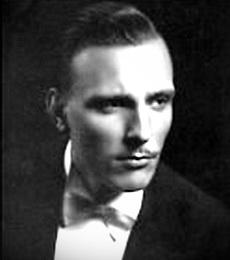 Arturo Benedetti Michelangeli was born in Brescia, northern Italy. Though he started studying the violin (at the age of three), he switched to the piano soon after. He was accepted at the Milan Conservatory at ten and graduated at the age of 14. He was not very successful at the Ysaÿe International Festival in 1938, where he took 7th place (Emil Gilels was the winner) but a year later he won the Geneva Piano competition. There, the perfection of his playing already apparent, and he was called “the new Liszt.” In 1940 he played a sensational debut concert in Rome. During WWII he served in the Italian air force but resumed his career soon after the war’s end. He debuted in London in 1946 and in the US – in 1948. In the 1950s he stopped concertizing for a while, concentrating on teaching, and formed his own International Pianists’ Academy. Maurizio Pollini and Martha Argerich were his students. Michelangeli resumed playing concerts in 1960, even though he was known to cancel almost as many concerts as he played. Michelangeli’s repertoire was very small for a pianist of his standing, especially compared to pianists like Sviatoslav Richter, but the crystalline perfection of his playing was incomparable. Michelangeli died in Lugano on June 12th of 1995. Here’s Chopin’s Ballade no. 1 in his 1972 recording.
Arturo Benedetti Michelangeli was born in Brescia, northern Italy. Though he started studying the violin (at the age of three), he switched to the piano soon after. He was accepted at the Milan Conservatory at ten and graduated at the age of 14. He was not very successful at the Ysaÿe International Festival in 1938, where he took 7th place (Emil Gilels was the winner) but a year later he won the Geneva Piano competition. There, the perfection of his playing already apparent, and he was called “the new Liszt.” In 1940 he played a sensational debut concert in Rome. During WWII he served in the Italian air force but resumed his career soon after the war’s end. He debuted in London in 1946 and in the US – in 1948. In the 1950s he stopped concertizing for a while, concentrating on teaching, and formed his own International Pianists’ Academy. Maurizio Pollini and Martha Argerich were his students. Michelangeli resumed playing concerts in 1960, even though he was known to cancel almost as many concerts as he played. Michelangeli’s repertoire was very small for a pianist of his standing, especially compared to pianists like Sviatoslav Richter, but the crystalline perfection of his playing was incomparable. Michelangeli died in Lugano on June 12th of 1995. Here’s Chopin’s Ballade no. 1 in his 1972 recording.
January 8, 2017. Three pianists. Three great pianists of the last century were born last week, and by remarkable coincidence all three were born on the same day, January 5th: Arturo Benedetti Michelangeli in 1920, Alfred Brendel in 1931, and Maurizio Pollini – in 1942. So very different as performers (even their repertoires have little in common), all three were cerebral musicians who did not wear their hearts on the sleeve. Their playing is faithful to the score and emotions come from the composer, not the artifice.
The great Austrian pianist Alfred Brendel was born in Wiesenberg in what is now the Czech Republic. His family moved to Zagreb when Alfred was six, and then to Graz, Austria, where he studied at the local conservatory. What is quite unusual for a future virtuoso is that Brendel didn’t have formal piano classes past the age of 14 and was mostly self-taught. Neither did he have a brilliant competition career: he only participated in one, the Buzoni, and took the fourth prize. His career was built slowly, as he played concerts across Europe. His made several recordings, again starting with just a few (later he would record all of Beethoven sonatas three times, and also three times all of Beethoven concertos – with James Levine and the Chicago Symphony, with Simon Rattle and the Vienna Philharmonic, and with Bernard Haitink and London Philharmonic. He also recorded all Mozart piano pieces and most of Schubert). The breakthrough came after his London concert in the late 1960s: it was taped, and the recording companies came calling. In 1972, after living in Vienna for 20 years, Brendel moved to London; he still lives there. Brendel is a supreme interpreter of the music of Schubert, Beethoven, and late Liszt. Here’s Brendel playing Schubert Impromptu Op.90 No.1
Compared to Brendel’s, Maurizio Pollini’s path to fame was more conventional. Born in Milan (he still lives there), he went to the local conservatory, and at the age of 18 won the International Chopin Piano competition. After a shaky couple of years Pollini embarked on a performance career. His technique, interpretive precision and depth brought him great acclaim. Pollini’s repertoire is broad and unusual. On the one hand, he’s one of the greatest Chopin players of the century. At the same time, his Beethoven is superb (not many pianists can play both at the same level). Pollini is also a great champion of contemporary music: in addition to Schoenberg and Webern he plays works of Pierre Boulez, Luigi Nono, Karlheinz Stockhausen and Bruno Maderna. Here’s Pollini’s interpretation of Chopin’s Nocturne No.1 Op.9 in B Flat minor.Permalink
January 1, 2018. Happy New Year! Best wishes to all our listeners in 2018 and lots of good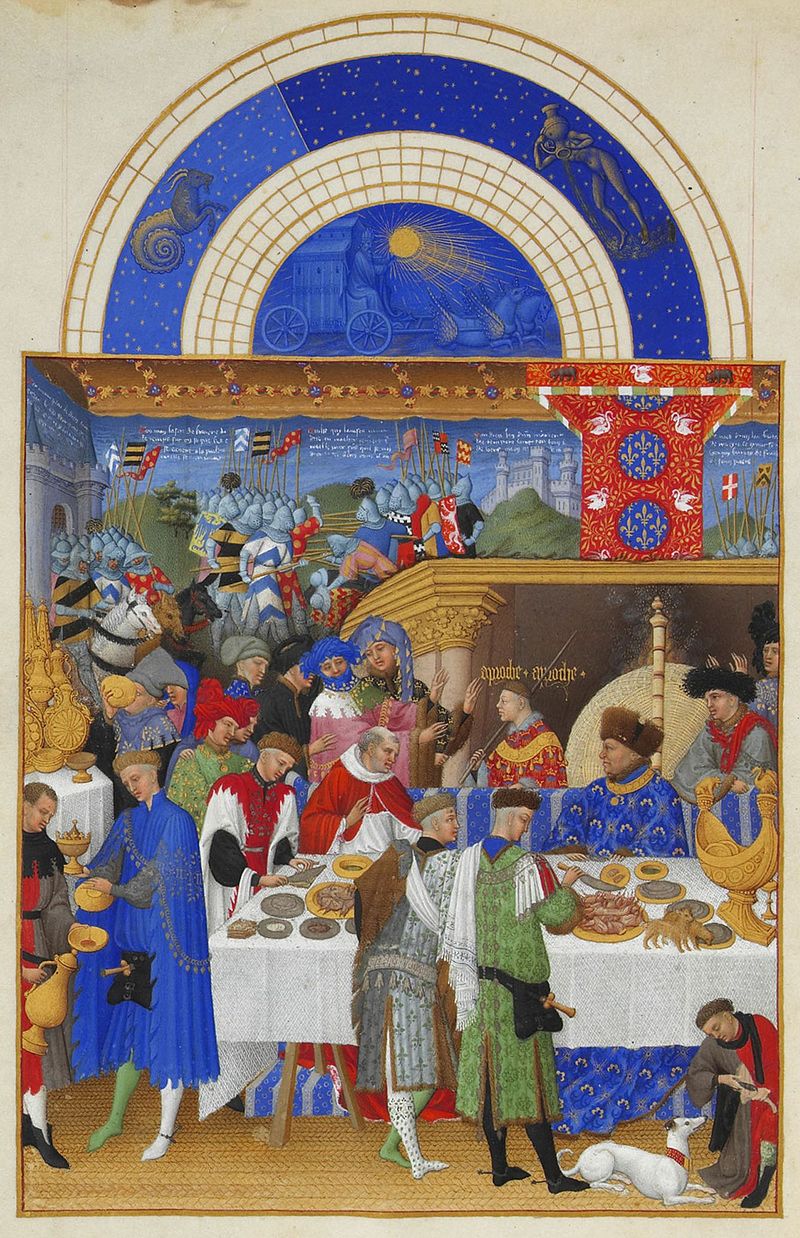 music! While we cannot think of any classical composition written specifically to celebrate theNew Year, its arrival is clearly associated with fireworks, and what could be better fireworks music than George Frideric Handel’s Music for the Royal Fireworks? The occasion for which Handel composed his famous suite was quite different (the end of the War of the Austrian Succession) but we don’t mind. Herer is it, gloriously performed by the Academy of St. Martin in the Field under the direction of Neville Marriner.
music! While we cannot think of any classical composition written specifically to celebrate theNew Year, its arrival is clearly associated with fireworks, and what could be better fireworks music than George Frideric Handel’s Music for the Royal Fireworks? The occasion for which Handel composed his famous suite was quite different (the end of the War of the Austrian Succession) but we don’t mind. Herer is it, gloriously performed by the Academy of St. Martin in the Field under the direction of Neville Marriner.
The picture to the left is January, from the Très Riches Heures du Duc de Berry, an illuminated manuscript created by the Limbourgh Brothers at the beginning of the 15th century. The members of the Duke’s household are exchanging New Years’ gifts.Permalink
December 25, 2017. Merry Christmas! As we’ve done in the past several years, we celebrate this wonderful holiday by playing sections from Johann Sebastian Bach’s masterpiece, the Christmas Oratorio. Last year we played the complete Part II, so now we’ll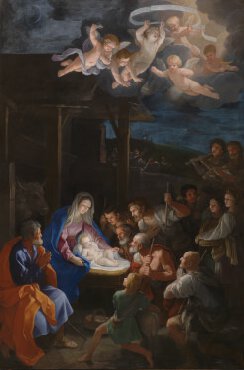 turn to Part III. The Oratorio was written in 1734; in it Bach reused some of the music from Cantatas BWV 213, 214 and 215, which he wrote during the previous year. Thus, the Christmas Oratorio opens with the chorus Herrscher des Himmels, erhöre das Lallen (Ruler of Heaven, hear the sound of laughter), which is taken directly from the chorus Blühet, ihr Linden in Sachsen, wie Zedern! (Bloom, you linden trees in Saxony, like cedars!) in the Cantata BWV 214. Nonetheless, there’s so much new music that the Oratorio clearly could be considered an independent piece of music. The theme of the third part of the Oratorio is Adoration of the Shepherds. As usual, it’s the Evangelist who tells the story: the angels visit the shepherds to reveal to them that a heavenly event has taken place in Bethlehem; the shepherds then embark on a journey; in Bethlehem, they find Mary, Joseph and the Child lying in the manger; they recognize the Child as the one they were told about; they spread the word about the Child: people wonder, only Mary understands the real meaning of it all; the shepherds depart, glorifying and praising the Lord. The Third part of the Oratorio was premiered on December 27th of 1734 at the Leipzig’s St. Nicholas church. We’ll hear it in the performance by the English Baroque Soloists under the direction of John Eliot Gardiner.Permalink
turn to Part III. The Oratorio was written in 1734; in it Bach reused some of the music from Cantatas BWV 213, 214 and 215, which he wrote during the previous year. Thus, the Christmas Oratorio opens with the chorus Herrscher des Himmels, erhöre das Lallen (Ruler of Heaven, hear the sound of laughter), which is taken directly from the chorus Blühet, ihr Linden in Sachsen, wie Zedern! (Bloom, you linden trees in Saxony, like cedars!) in the Cantata BWV 214. Nonetheless, there’s so much new music that the Oratorio clearly could be considered an independent piece of music. The theme of the third part of the Oratorio is Adoration of the Shepherds. As usual, it’s the Evangelist who tells the story: the angels visit the shepherds to reveal to them that a heavenly event has taken place in Bethlehem; the shepherds then embark on a journey; in Bethlehem, they find Mary, Joseph and the Child lying in the manger; they recognize the Child as the one they were told about; they spread the word about the Child: people wonder, only Mary understands the real meaning of it all; the shepherds depart, glorifying and praising the Lord. The Third part of the Oratorio was premiered on December 27th of 1734 at the Leipzig’s St. Nicholas church. We’ll hear it in the performance by the English Baroque Soloists under the direction of John Eliot Gardiner.Permalink
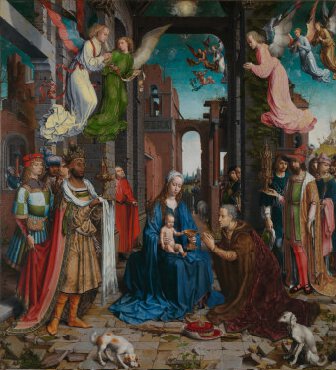 The great Flemish composer Orlando di Lasso (or Orlande di Lassus, as his name is sometimes spelled) was born around 1532 in Mons, county of Hainaut in what is now Belgium. At the age of twelve he followed Ferrante Gonzaga to Mantua, then spent some time in Milan and Naples before settling in Rome. In 1556, already famous as a composer, he was invited to Munich by Albrecht V, Duke of Bavaria, who, eager to compete with Italian courts, was hiring musicians from different countries. Orlando stayed in the employ of Dukes for the rest of his life. Soon after his arrival in Bavaria, Orlando presented the Duke Albrecht with a set of 12 motets, which he titled Prophetiae Sibyllarum ("Sibylline Prophecies"). The author of the texts is unknown, but all of the “prophecies” foretell the coming of Christ. Here are two of the motets, Sibylla Europæa and Sibylla Erythræa, both beautifully performed by the ensemble De Labyrintho, Walter Testolin conducting.
The great Flemish composer Orlando di Lasso (or Orlande di Lassus, as his name is sometimes spelled) was born around 1532 in Mons, county of Hainaut in what is now Belgium. At the age of twelve he followed Ferrante Gonzaga to Mantua, then spent some time in Milan and Naples before settling in Rome. In 1556, already famous as a composer, he was invited to Munich by Albrecht V, Duke of Bavaria, who, eager to compete with Italian courts, was hiring musicians from different countries. Orlando stayed in the employ of Dukes for the rest of his life. Soon after his arrival in Bavaria, Orlando presented the Duke Albrecht with a set of 12 motets, which he titled Prophetiae Sibyllarum ("Sibylline Prophecies"). The author of the texts is unknown, but all of the “prophecies” foretell the coming of Christ. Here are two of the motets, Sibylla Europæa and Sibylla Erythræa, both beautifully performed by the ensemble De Labyrintho, Walter Testolin conducting.
December 18, 2017. Christmas is coming soon, and this gives us a chance to celebrate several Renaissance composers. We usually look for special events to mention them throughout the year, since there are no dates associated with their birthday. What could be a better occasion than Christmas, as all of them wrote church music, and much of it music for Christmas services.
One of the key texts and corresponding chants of the Catholic Christmas liturgy is O Magnum Mysterium (O great mystery), which is sung on Christmas Matins. Many Renaissance composers wrote motets on this text, one of them Giovanni Pierluigi da Palestrina, the quintessential polyphonist of the Hight Renaissance. Palestrina was one of the few Italians working in Rome: most of the famous composers of that time were either Flemish or Spanish (that would change in just one generation and Italians would reign supreme for years to come). Palestrina was born around 1525 in the town of the same name. In 1551 Pope Julius III appointed him maestro di cappella at Cappella Giulia, one of the two key choirs at the Vatican, another being the Sistine Chapel choir). From that point on Palestrina moved from one important position to another. O Magnum Mysterium, Palestrina’s six-voice motet, was published in 1569. It’s sung here by the King's College Choir, Cambridge, Sir Philip Ledge conducting.
Tomás Luis de Victoria also wrote an O Magnum Mysterium motet. Victoria, a Spaniard, is often considered one of the three great High Renaissance composers, together with Palestrina and Lasso. He was born in a small town of Sanchidrián in the province of Ávila in 1548. He went to Rome in 1565 and may have studied with Palestrina. His sublime Mysterium can be heard here, in the performance by the Oxford Camerata under the direction of Jeremy Summerly.
We want to mention another rendition of O Magnum Mysterium, this one by a Venetian, Giovanni Gabrieli. Gabrieli, born around 1554 in Venice, and in his twenties, went to Munich to study with Lasso and stayed there for some years. Here’s his version of O Magnum Mysterium, performed by The Choir of King's College and The Philip Jones Brass Ensemble.
The Adoration of the Kings (1510-1515), above, was painted by Jan Gossaert, who, like Orlando di Lasso, was Flemish and also born in the French-speaking county of Hinaut.Permalink